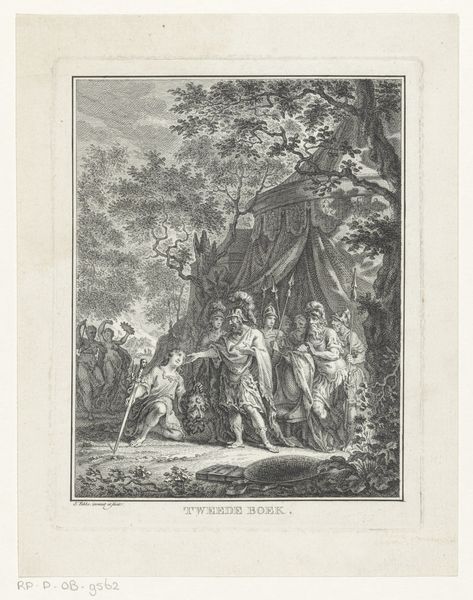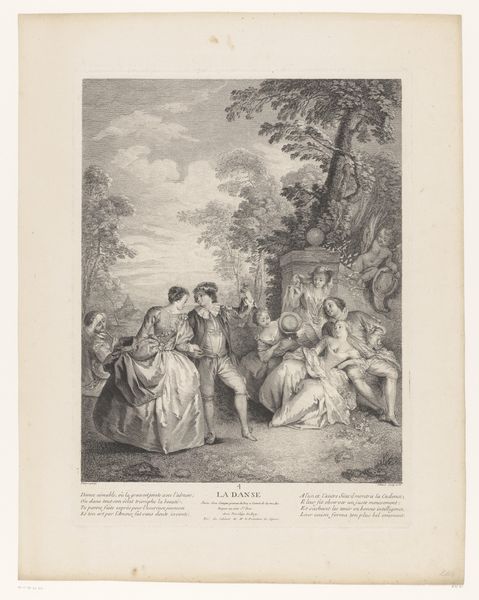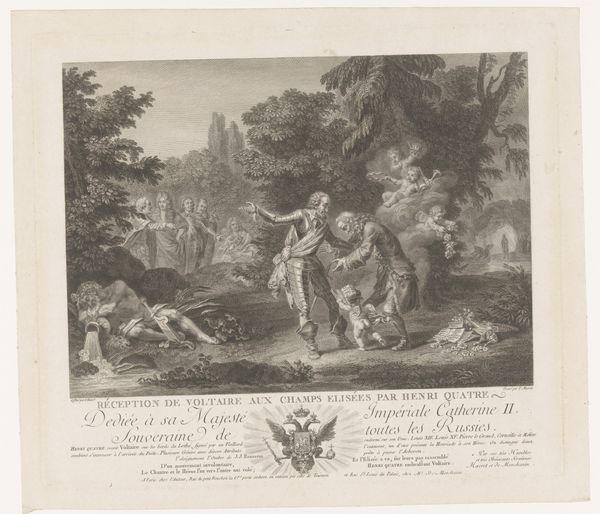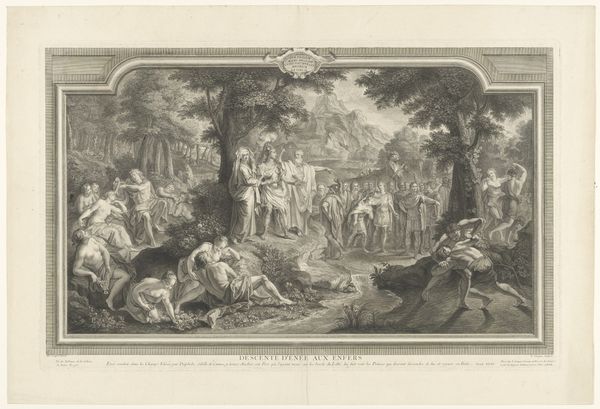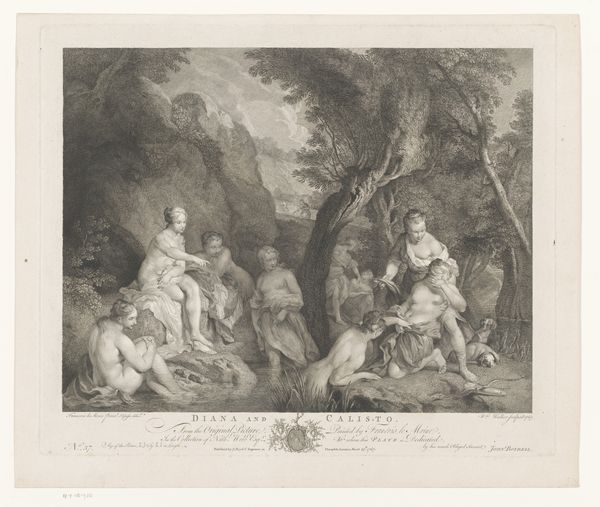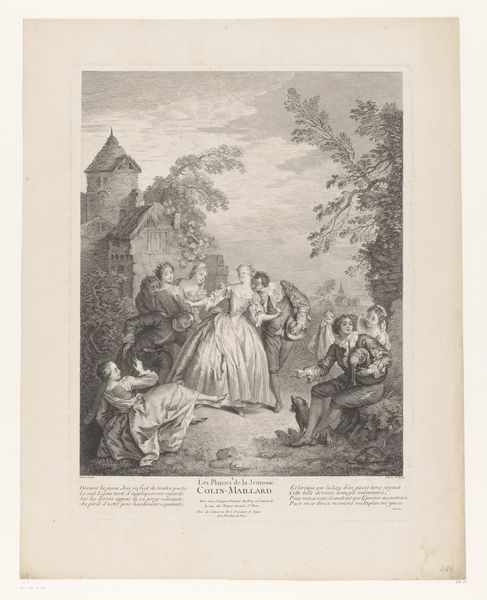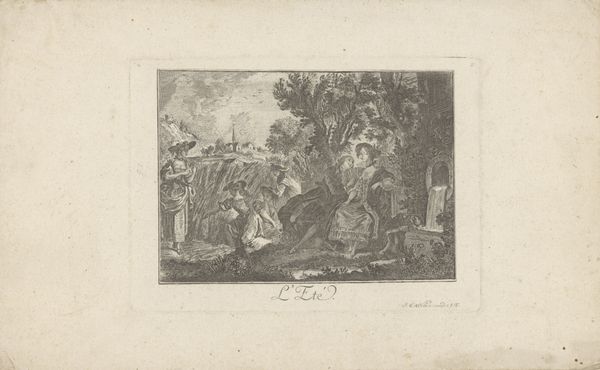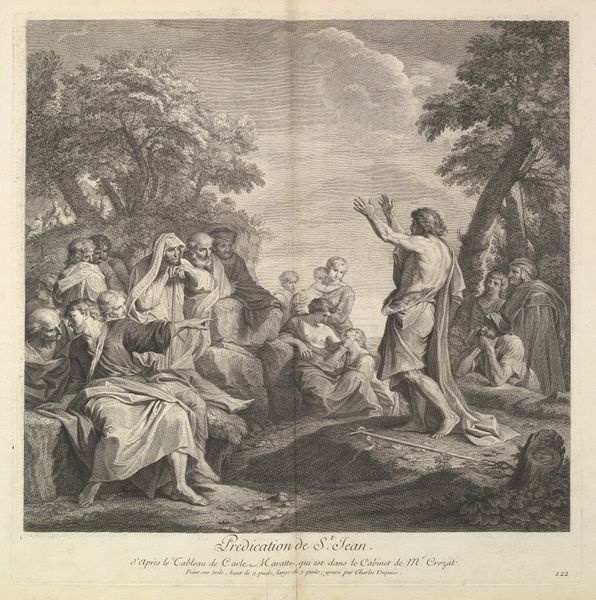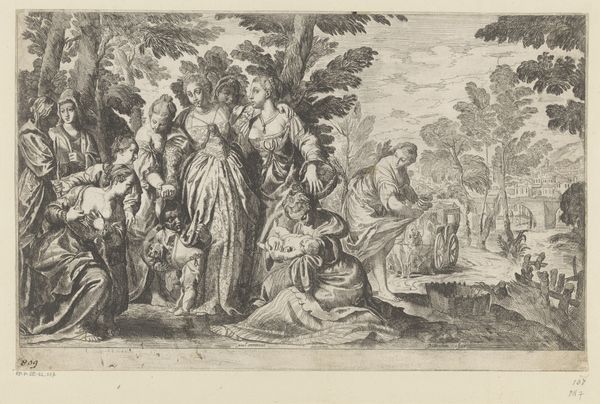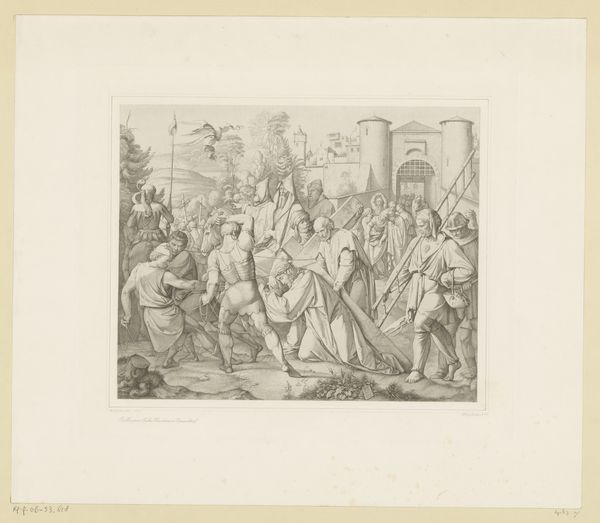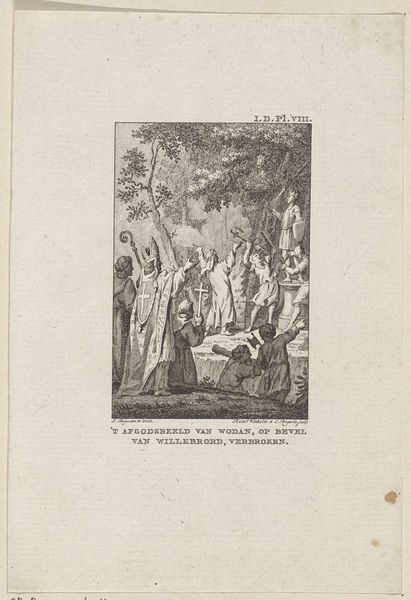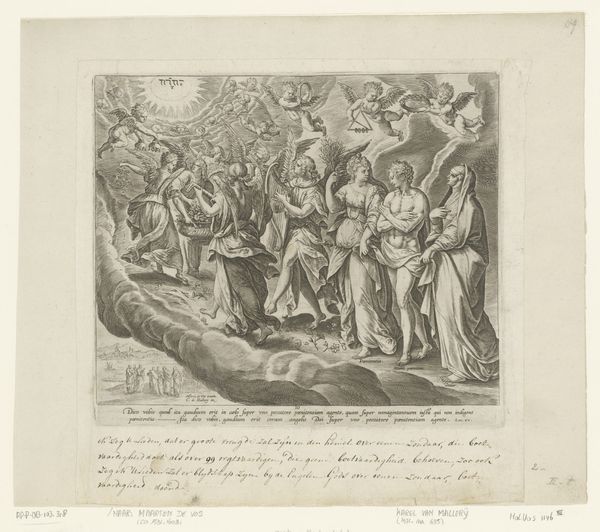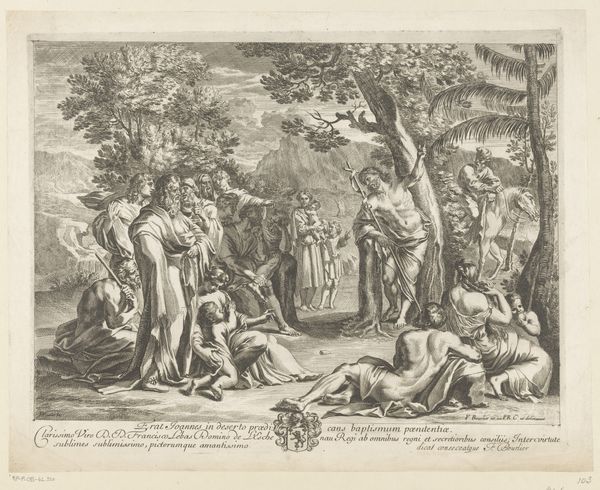
drawing, print, etching, paper
#
drawing
#
baroque
# print
#
etching
#
landscape
#
figuration
#
paper
#
france
#
genre-painting
Dimensions: 281 × 355 mm (image); 318 × 368 mm (image/plate); 578 × 468 mm (sheet)
Copyright: Public Domain
Around 1760, Pierre François Basan created 'The Carnival of Parnassus', a print now held at the Art Institute of Chicago. It’s made using etching, a printmaking technique where lines are incised into a metal plate with acid, which then holds ink and transfers the image to paper. Look closely, and you can see how the etched lines create the scene’s fine details. The process of etching allowed Basan to create multiple copies of this image. It’s a form of reproduction that was crucial for disseminating visual culture at the time. Each print required skilled labor, from preparing the plate to the final printing. The print’s existence is tied to broader issues of labor, politics, and consumption. It raises the question: how do industrial processes intersect with artistic expression, and how do these prints reflect or influence the social values of their time? This piece reminds us that even seemingly simple artworks are embedded in complex networks of production, consumption, and cultural exchange. By understanding these contexts, we gain a richer appreciation of the artwork itself.
Comments
No comments
Be the first to comment and join the conversation on the ultimate creative platform.
